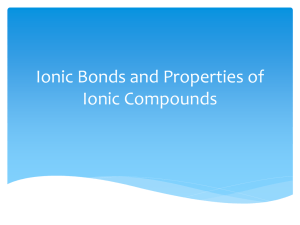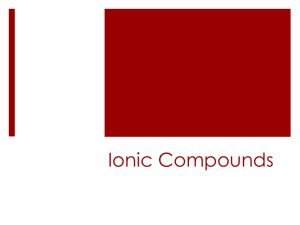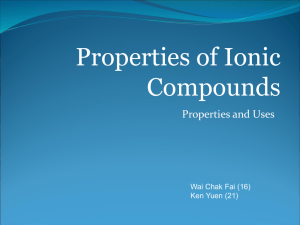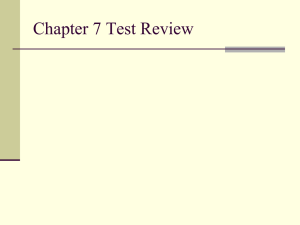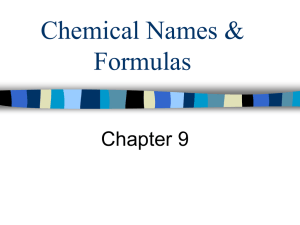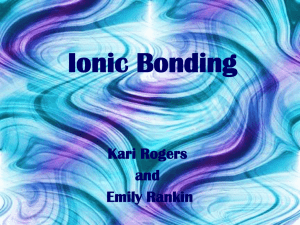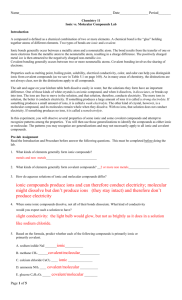Ionic-Compounds-and
advertisement
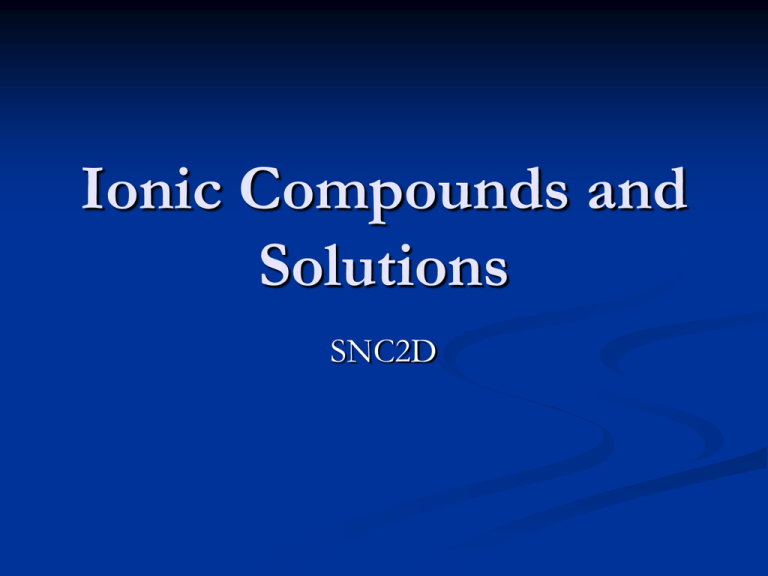
Ionic Compounds and Solutions SNC2D Electrostatic attraction Electrostatic attraction When a metal gives up one or more electrons to a non-metal, the resulting oppositely-charged ions will experience an electrostatic attraction: Ionic bonds and compounds This electrostatic attraction is called an ionic bond. The resulting compound is an ionic compound. Ionic bonds and compounds Note that the name of the positive ion is always written first in the name of the compound. (We will do more on naming and formulas next week.) Properties of Ionic Compounds In nature, this electrostatic attraction produces regular crystal lattice structures: Properties of Ionic Compounds Ionic compounds: at room temperature, are usually hard, brittle solids that can be crushed have high melting and boiling points Properties of Ionic Compounds Ionic compounds: at room temperature, are usually hard, brittle solids that can be crushed have high melting and boiling points (often) dissolve easily in water Solutions An ionic compound dissolved in water is said to be aqueous (aq). Solutions Recall that a solution is a homogenous mixture of pure substances; in this case, the pure substances are the ionic compound and water. Solutions These compounds dissolve in water because one side of the water molecule (H2) is positive and attracts the negative ions and the other side is (O) is negative and attracts the positive ions. Solutions Because the charged ions can move freely, solutions of ionic compounds are good conductors of electricity. Testing for Ions It is possible to test samples of water for the presence of particular ions because these ions will react in predictable ways with testing solutions of other ionic compounds. Please refer to your lab handout for directions.


